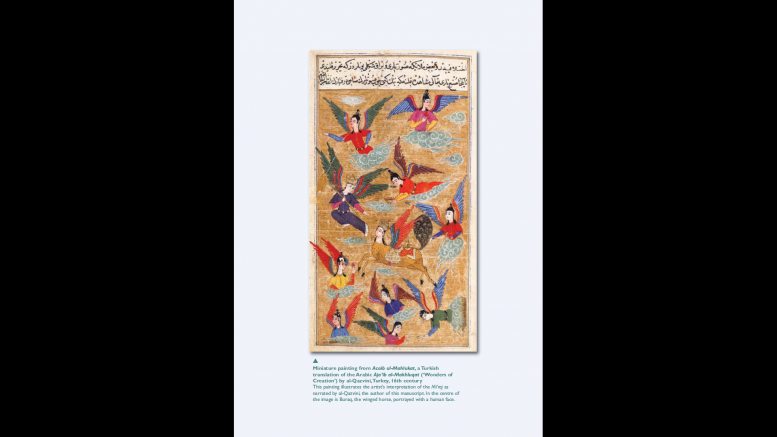“Glory be to Him Who took His servant by night from the Masjid al-Haram to the Masjid al-Aqsa whose surroundings We have blessed, so that We might show him of Our signs…” [Al-Isra (17:1)]
Today, the Muslim brethren mark and celebrate a remarkable event of commemoration. This is the Mi’raj.
Mi‘raj is an Arabic word which literally means ladder. In Muslim tradition, the festival of Mi‘raj signifies the ascent to heaven by Prophet Muhammad (peace be upon him and his family). Esoteric interpretations of Islam tend to emphasize the spiritual significance of Mi‘raj. It is seen as a symbol of the journey of the soul, and the human potential to rise above the pleasures of material life – through prayer, piety, and discipline.
Qur‘anic references to the Prophet’s celestial journey and spiritual vision have an important place in Muslim consciousness. These, combined with oral traditions and historical accounts of the Mi‘raj, have found expression not only in theology, but in art, poetry, and philosophy as well. Ranging from the physical and the miraculous to the spiritual and personal, poetic expressions and philosophical explanations of the Mi‘raj reflect some common themes, including: spiritual elevation, purification of the soul, and humility before the Divine.
Some Muslim traditions interpret the story literally. In exoteric traditions of Islam, the Mi’raj is understood as a physical journey that includes the physical movement of the Prophet from Mecca to Jerusalem, followed by his ascent to the seven heavens until he finally reached the ‘Throne of God’.
While, in esoteric traditions of Islam, believers aspire to experience Mi’raj in their lives, as the Prophet did. They believe that by performing their religious duties, by leading an ethical life, through prayer and meditation, personal search and reflection. The Prophet is reported to have said, ‘Prayer is the Mi’raj of the believers.’
Mi’raj Mubarak.
[Adapted from the IIS Secondary Module, Faith and Practice in Islamic Traditions Vol.2]

